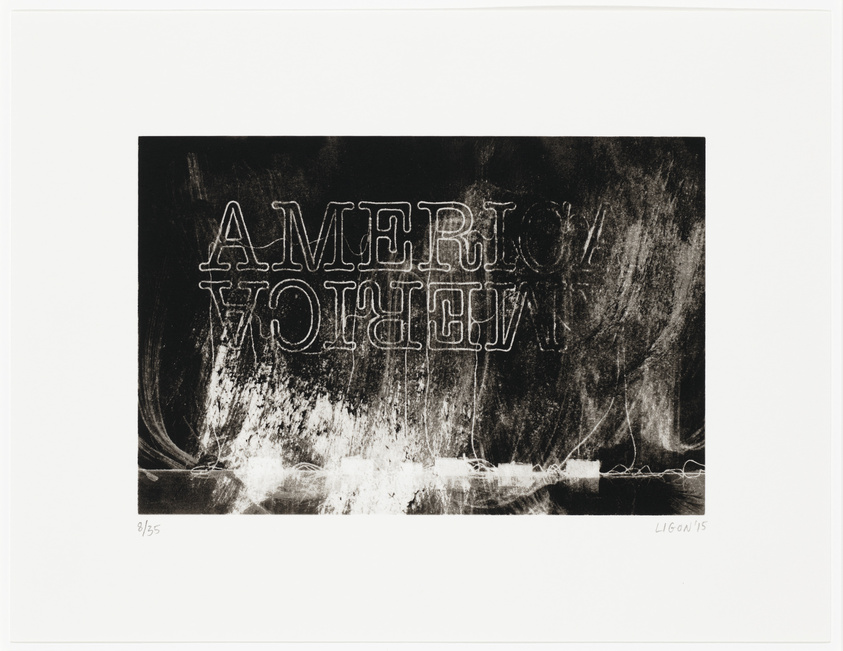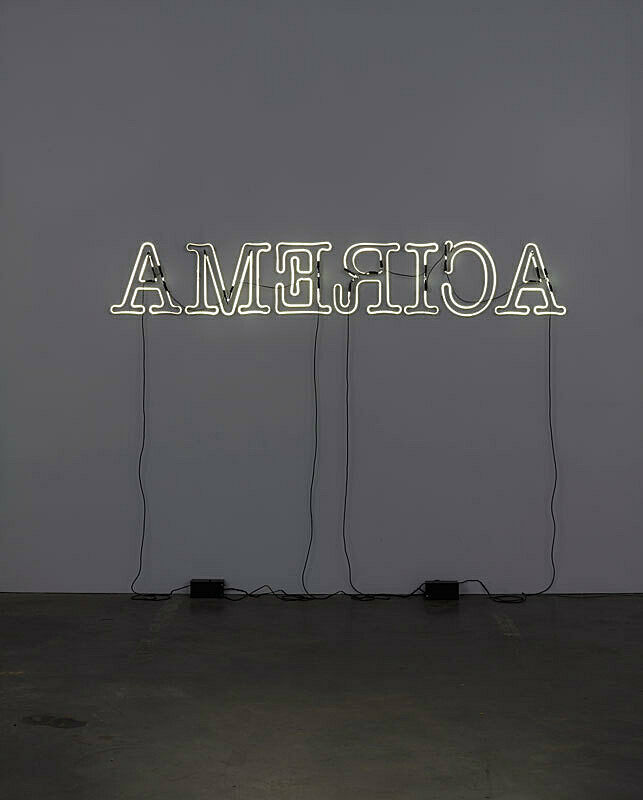Glenn Ligon, Untitled (I Remember the Very Day That I Became Colored), 1990
Mar 11, 2011
0:00
Glenn Ligon, Untitled (I Remember the Very Day That I Became Colored), 1990
0:00
Narrator: The phrase, “I Remember the Very Day that I Became Colored,” comes from writer Zora Neale Hurston’s essay, “How it Feels to be Colored Me.” As curator Scott Rothkopf explains, the meaning of these words is amplified through the work’s formal properties and Ligon’s meticulous process.
Scott Rothkopf: Glenn begins by painting the surface of the door with white gesso ground, and then has to put down thin pencil rules that he'll use to basically mark where the text falls. But there aren't any rules that show the separation of one letter from another . . . so, he is sort of guessing as he puts each letter down, and the space between them starts to vary.
If he gets to the end of the line, he has to think about whether he's going to start another word. . . . And in this painting, you see places where there are big white gaps on the right where he might have been able to fit the next word.
And sometimes he makes mistakes. About fifteen lines into this painting you see he has the letters c-o-l-o—which is the first part of "colored"—and when he goes to finish that word on the next line he actually repeats the "o."
But, I don’t think any of these errors are things that detract from the painting. In fact, they’re what make it interesting. The way that words blur into one another, the way that they become more or less easy to read, and the way that those characteristics on the surface actually relate to some of the sense that the text communicates, this feeling of Zora Neale Hurston, the author, becoming colored, and how this painting itself becomes colored as it gets covered with oil stick.


